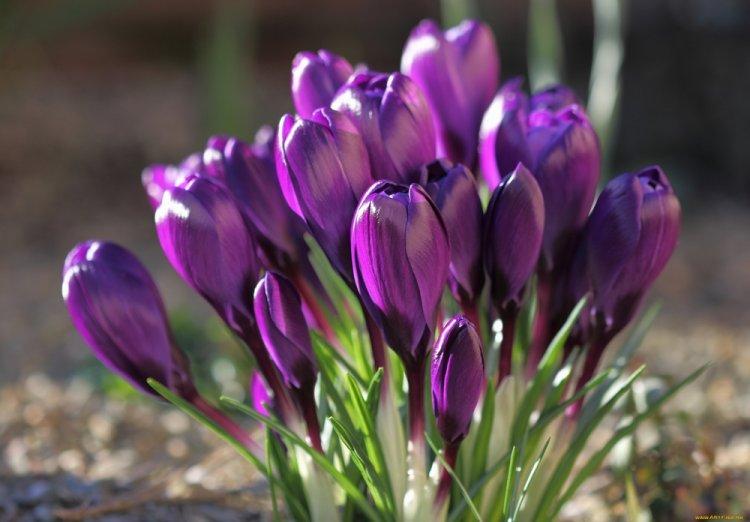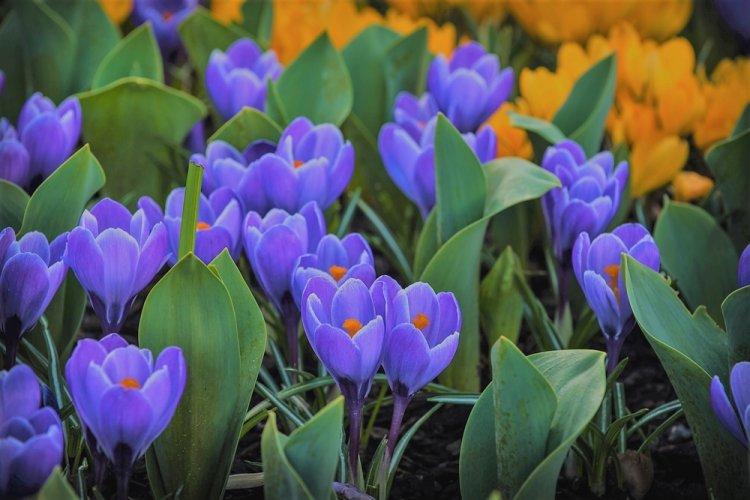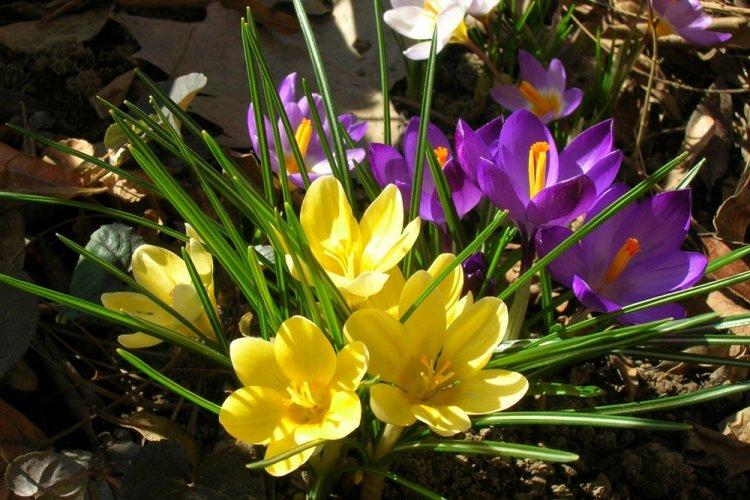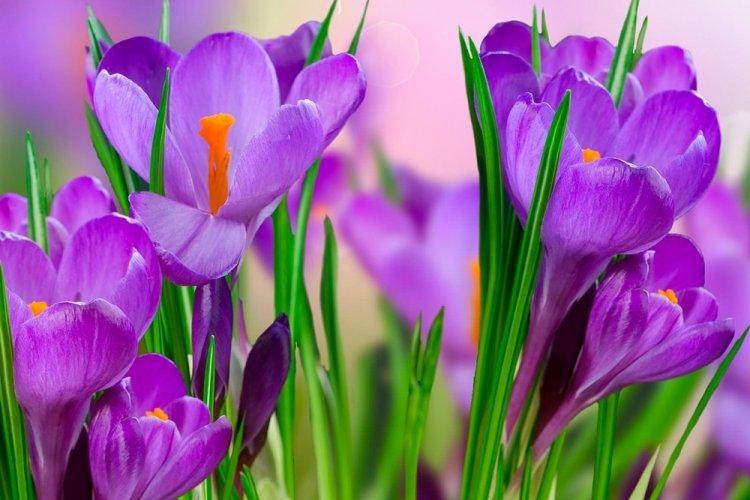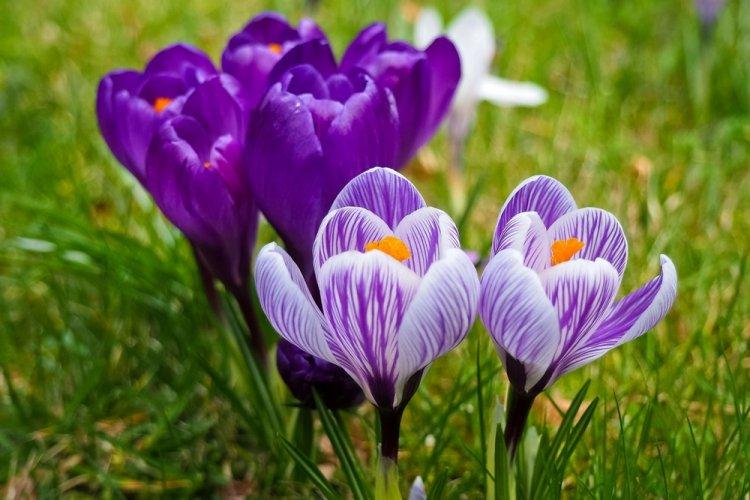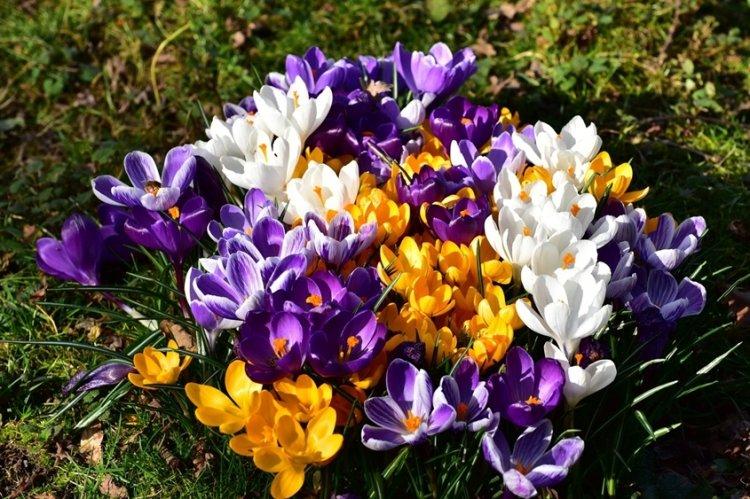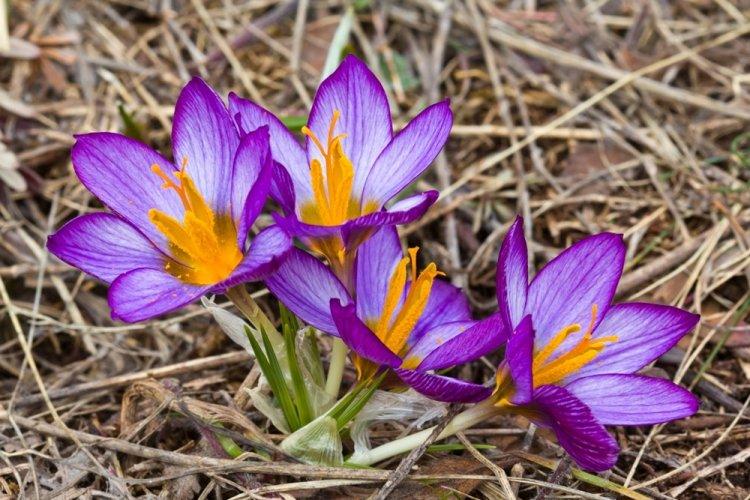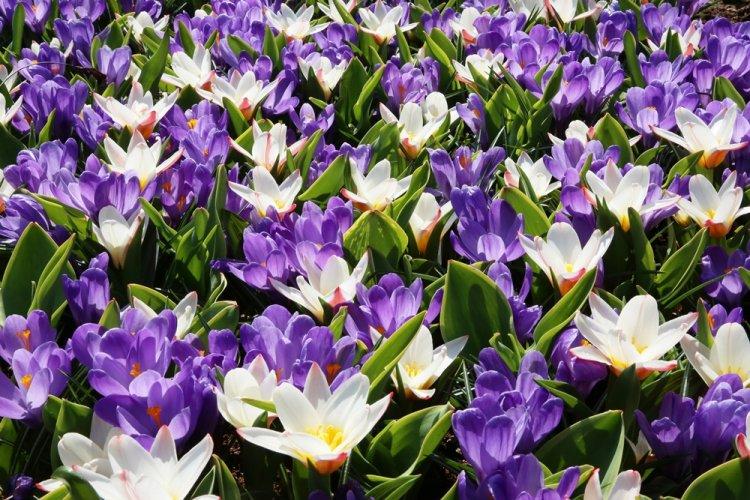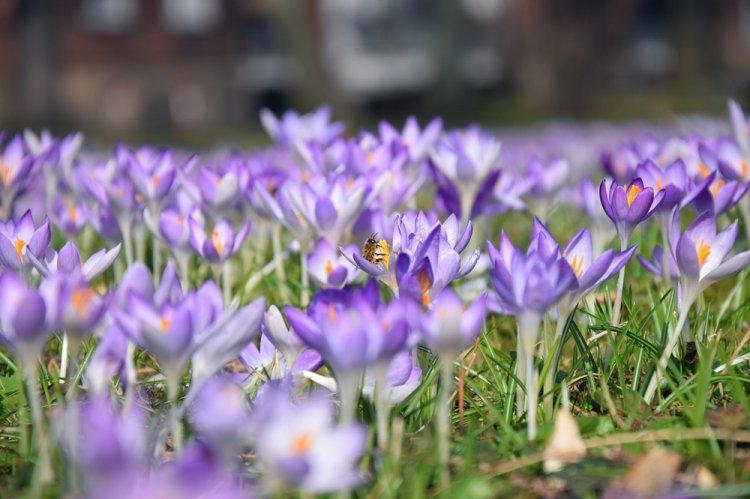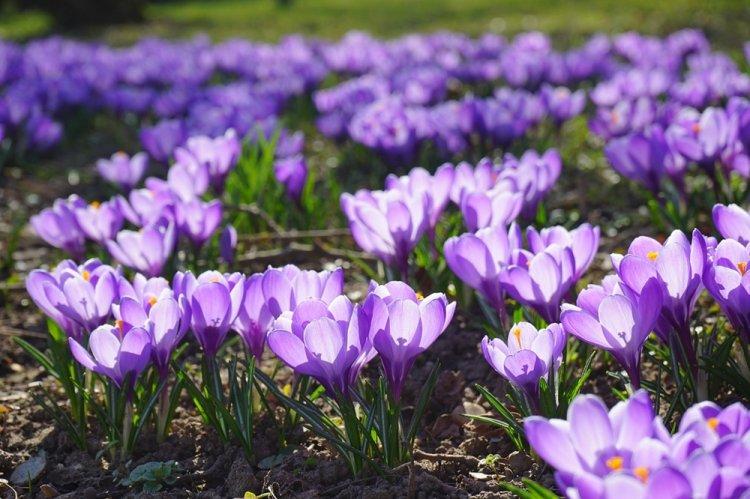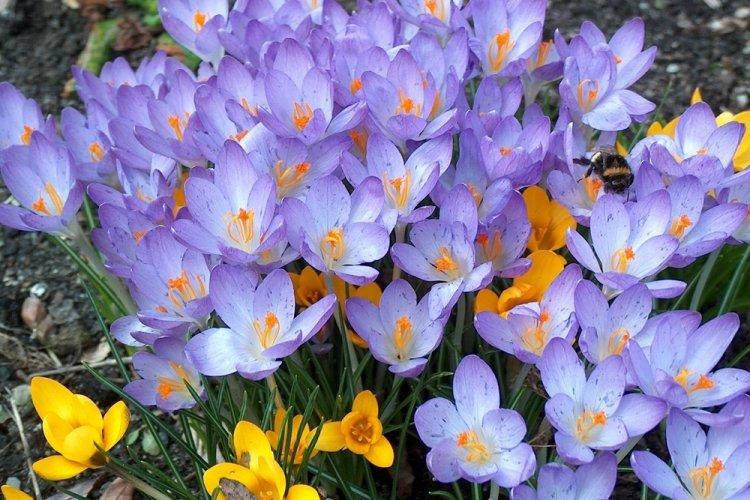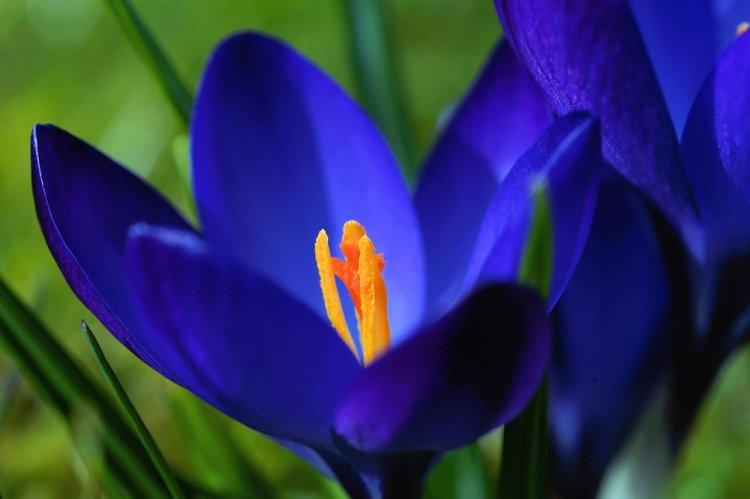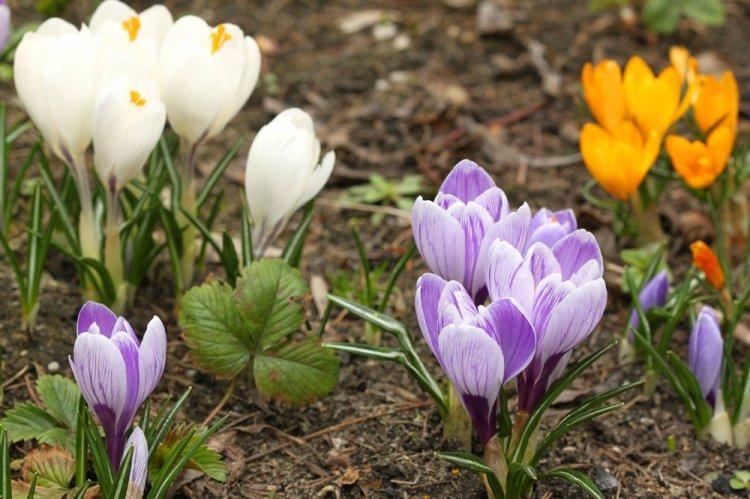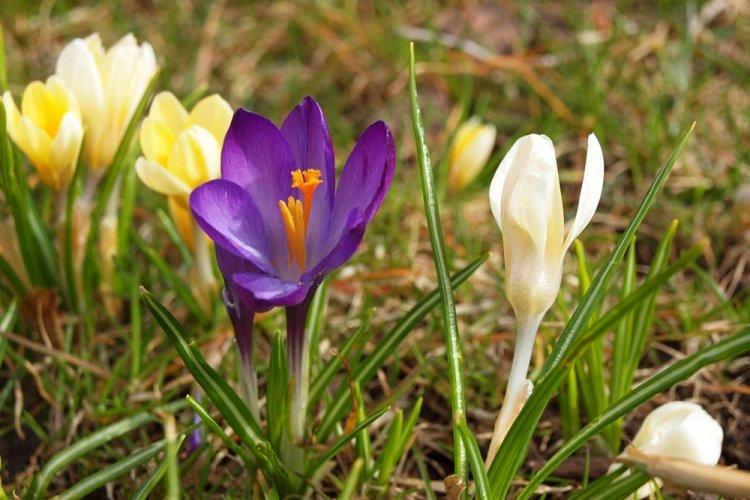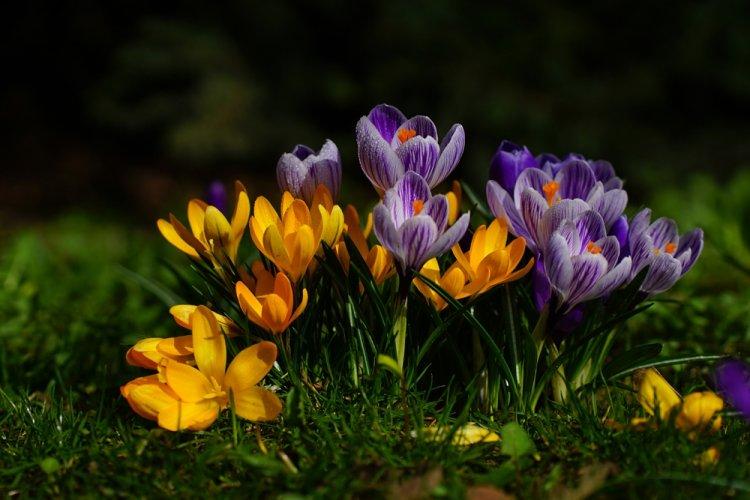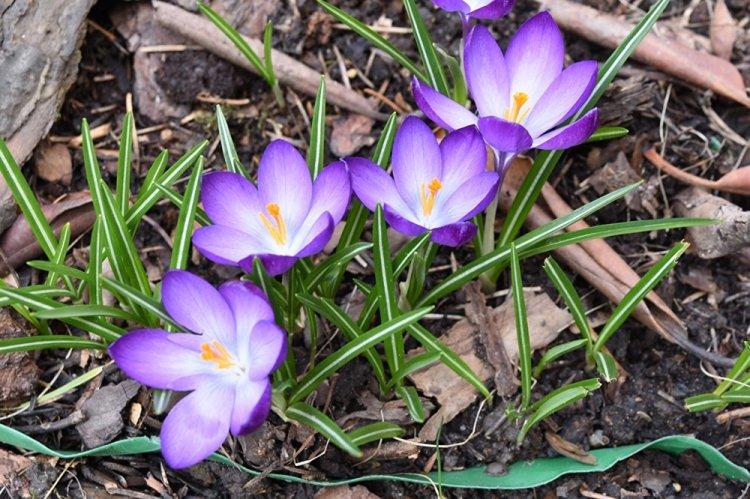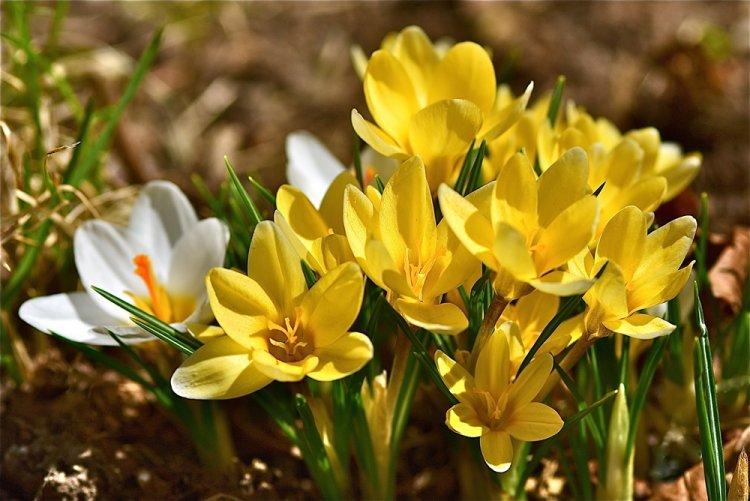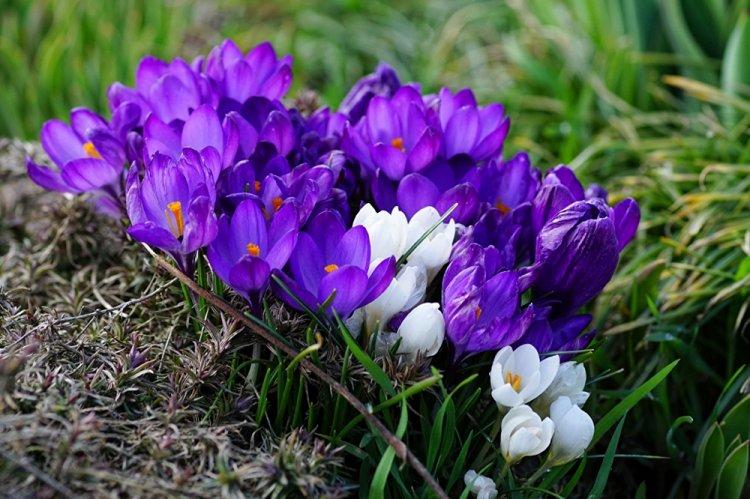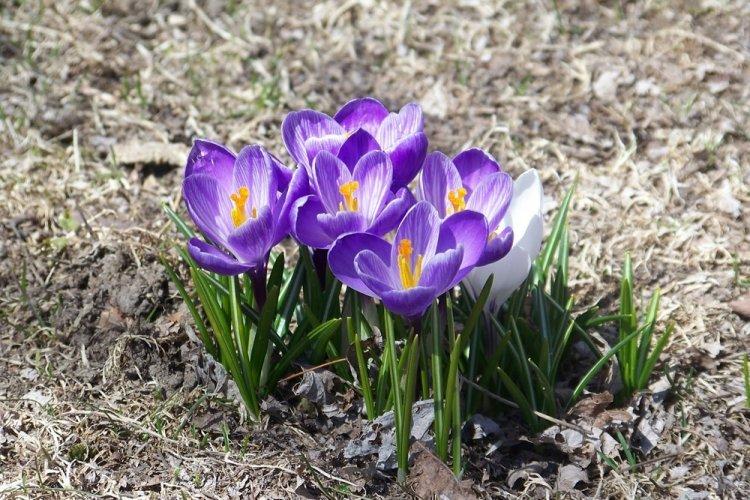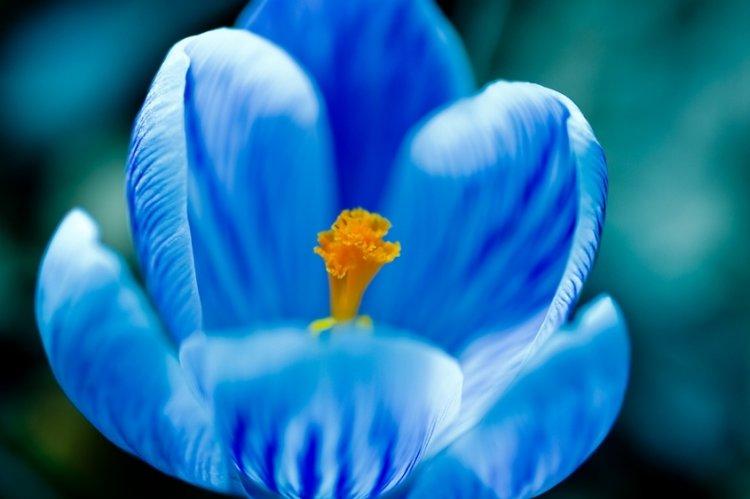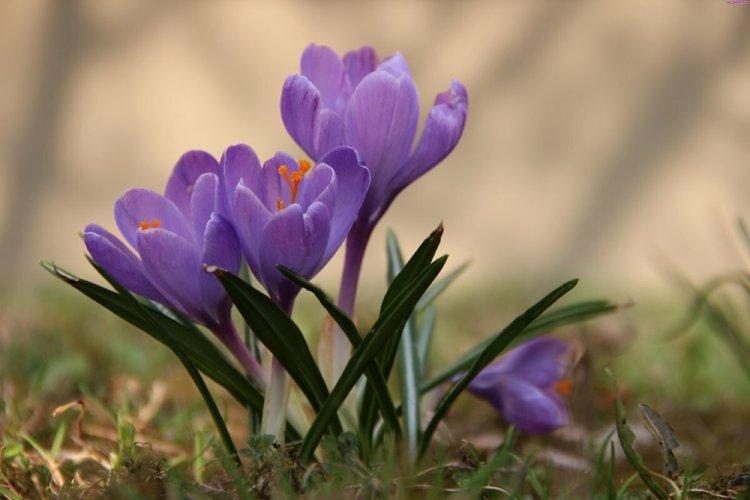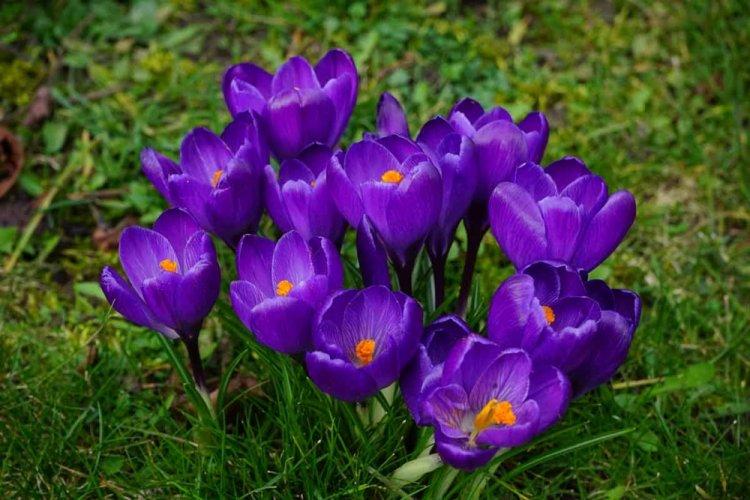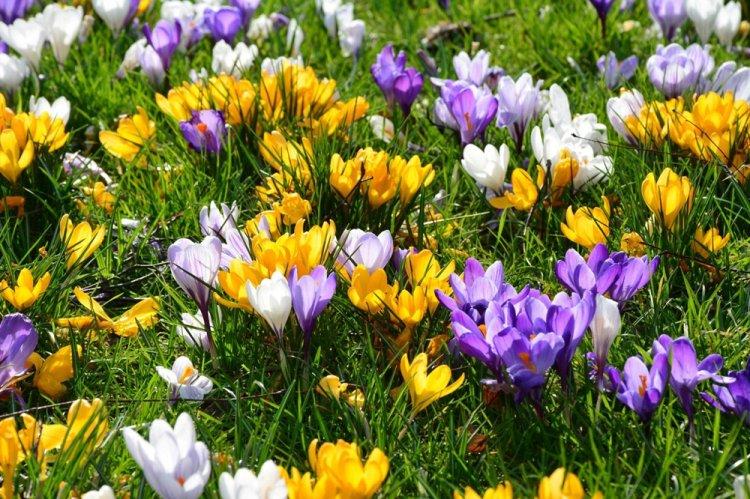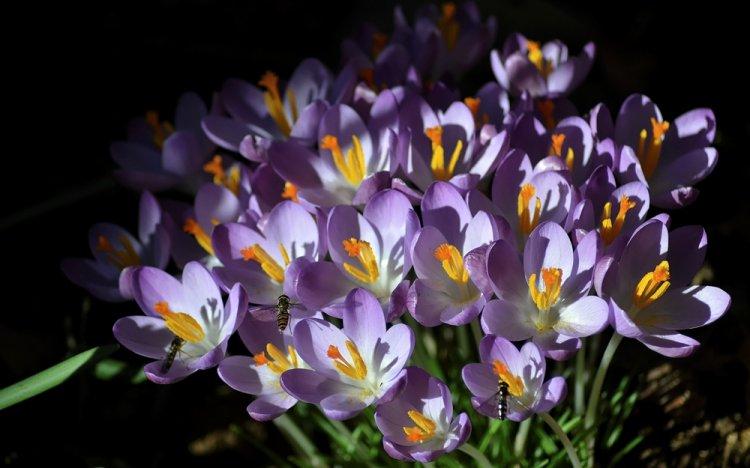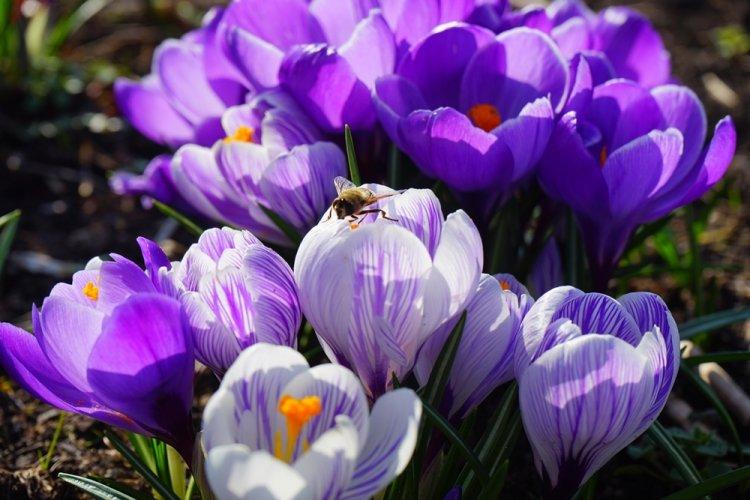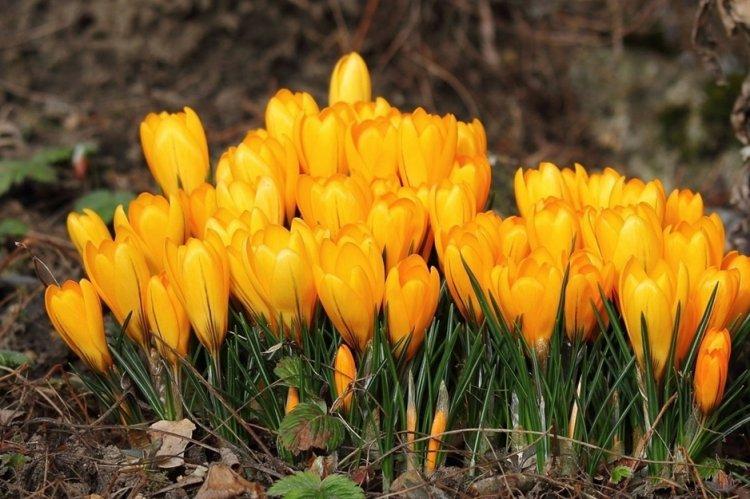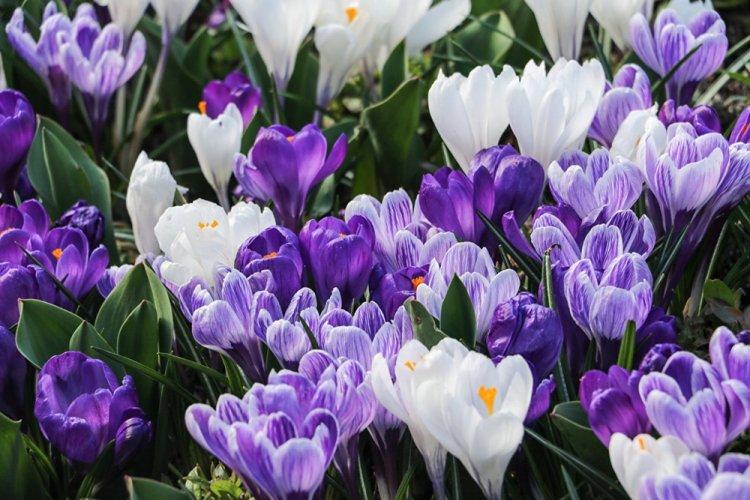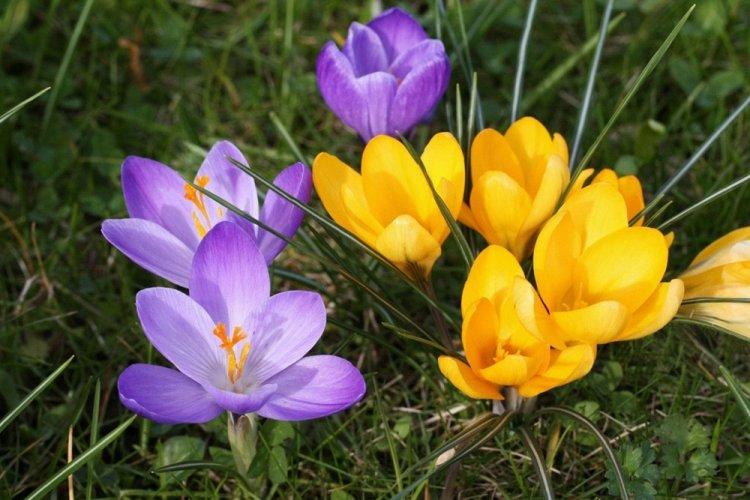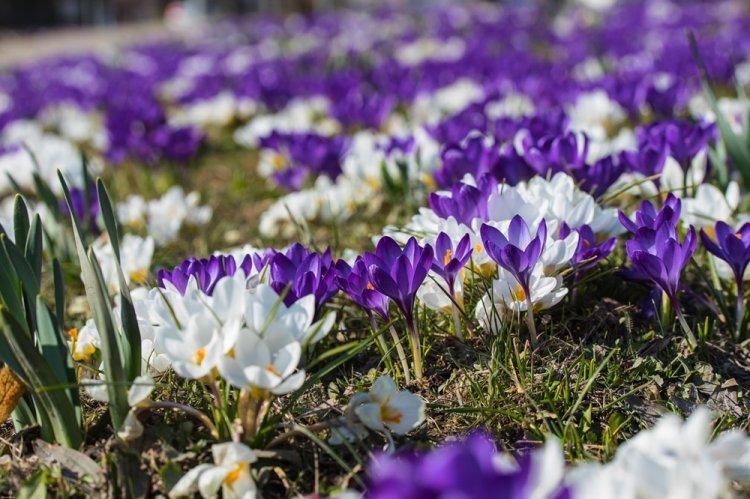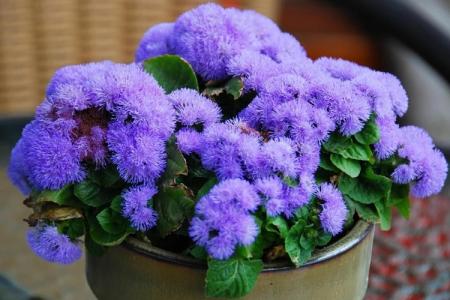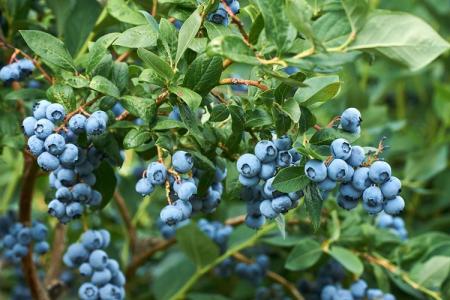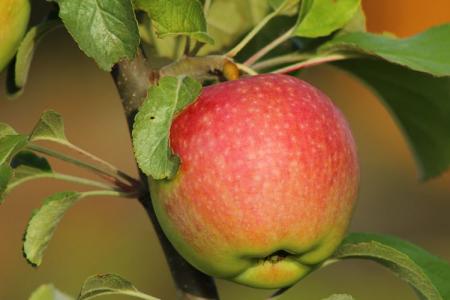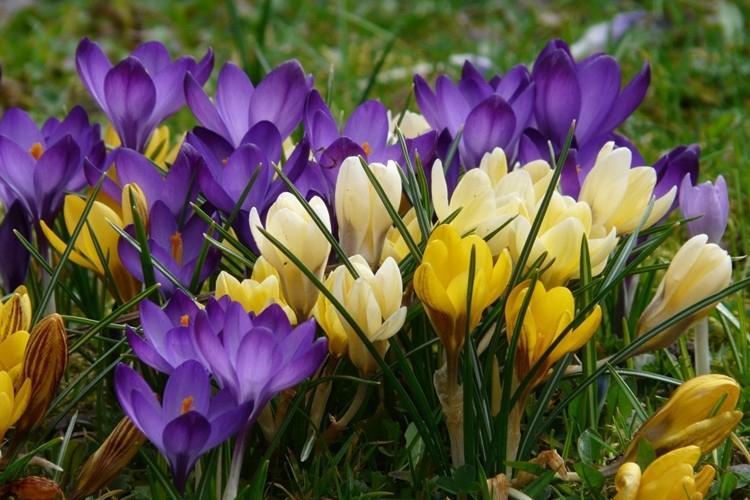
When the snow cover finally comes off the ground, resolute crocuses are among the first to hatch towards the sun. They bloom early, are appropriate everywhere and do not need complicated care. It is enough to plant the seedlings once so that for many more years bright crocuses will make their way through last year's grass in the spring.
general information
Crocus is a perennial flower that is very popular in decorative floriculture. It is to this genus that the saffron spice, so beloved by culinary specialists, belongs - just one of the types of crocuses. In nature, they grow in meadows and fields, on plains and highlands, in steppes and rare forests.
This is a winter-hardy flower that does not need shelter during the cold season. He generally requires a minimum of care and is very self-sufficient in his own way. A short plant stretches a maximum of 10 cm, and almost all of this is a lush dense inflorescence, which is protected by dense narrow leaves at the very ground.
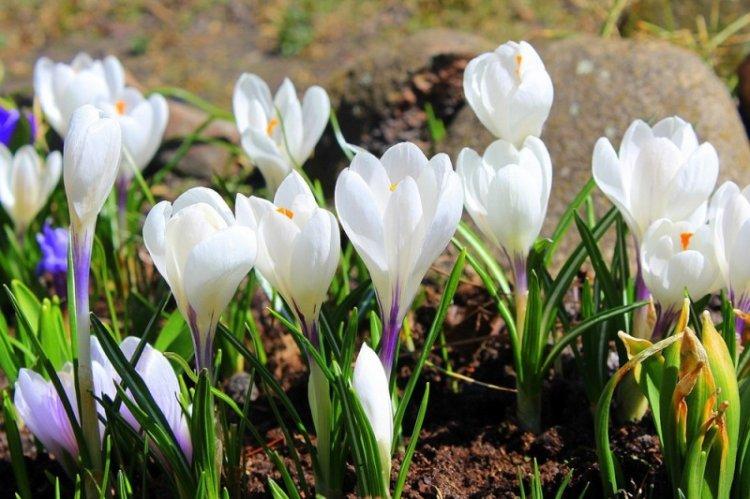
An interesting feature of the crocus is the absence of a stem as such. A dense leafy rosette radiates directly from the ground and forms a kind of protective shell for the young shoot. The shoot immediately turns into a short peduncle without leaves, and crocuses bloom in bright sunny weather.
The rhizome of a plant is something between a tuber and a bulb. During the season, it gains useful nutrients that it will spend next year. Due to this, the tuber first increases in size and then decreases.
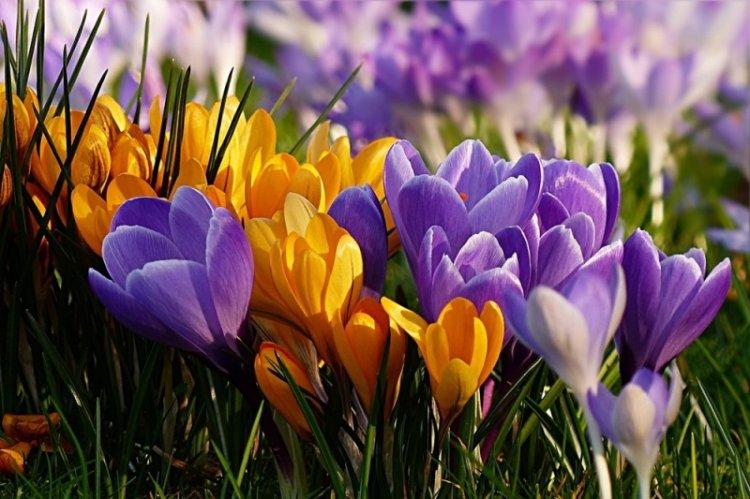
Crocus species
Crocuses are natural and decorative, and they differ mainly in color. Natural - yellow, orange, blue or purple, and sometimes snow-white albinos. But cultivars can be almost any, including spotted and multi-colored.
Spring crocus
It is one of the first garden varieties and the so-called large-flowered Dutch hybrids. It is common in the Pyrenees, the Alps and the Balkans and blooms in the earliest spring. Spring crocus flowers are white, lilac or even two-colored.
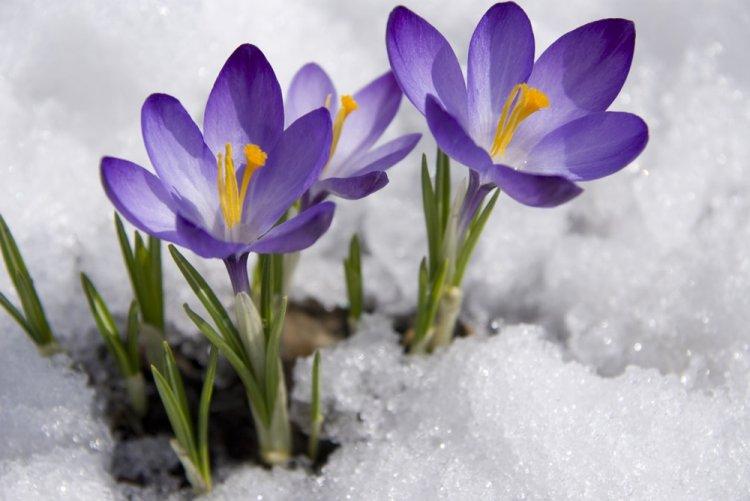
Lovely crocus
It is a Crimean and Caucasian mountain variety that is still found in some regions of Iran and Turkey. It has large lilac petals with dark veining patterns and a bright orange center. Less common are snow-white or even blue flowers.
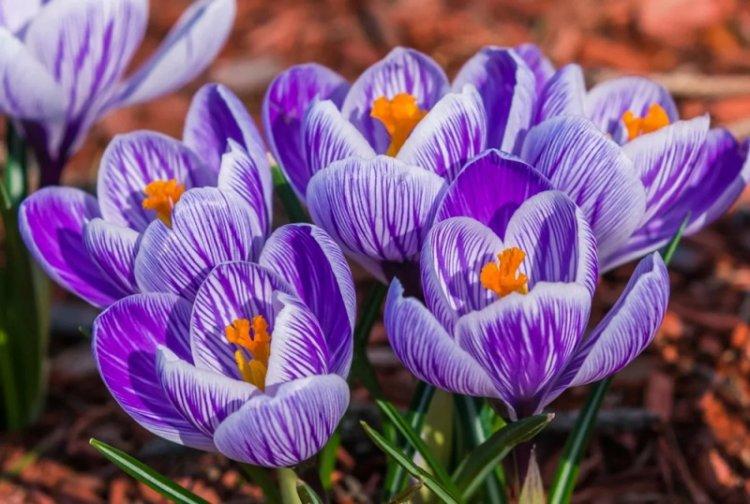
Narrow-leaved crocus
This variety is more common in the Balkans, Asia Minor and Crimea, and better tolerates mid-latitude conditions. It is relatively small and has elongated narrow leaves. The flowers of such a crocus are pale yellow, but sometimes the petals are painted like a gradient from bright to faded.
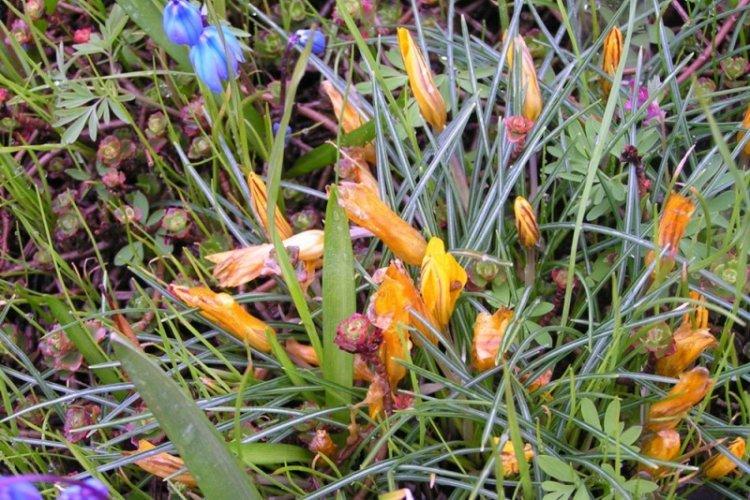
Yellow crocus
The yellow crocus came to our latitudes from the countries of Southern Europe, and its main feature is obvious from the name. The yellow flowers are so vibrant and intense that sometimes the hue fades to orange. The outer petals are decorated with grayish or purple stripes.
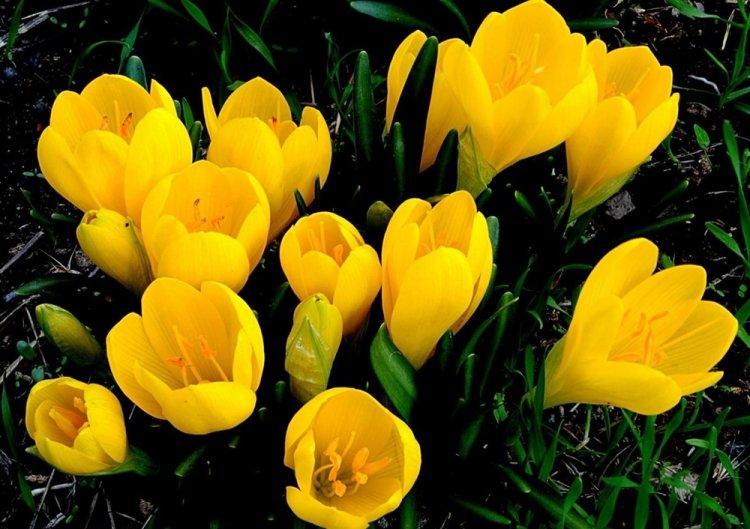
Sowing crocus
This is the same saffron that has been successfully cultivated for several thousand years. It does not occur in the wild and came to our latitudes from the Southwest of Asia. Saffron is mentioned in ancient Greek manuscripts, and presumably it is a hybrid of three different natural species at once. It has purple, blue, yellow or white flowers with a long, bright pistil, which are dried as a spice.
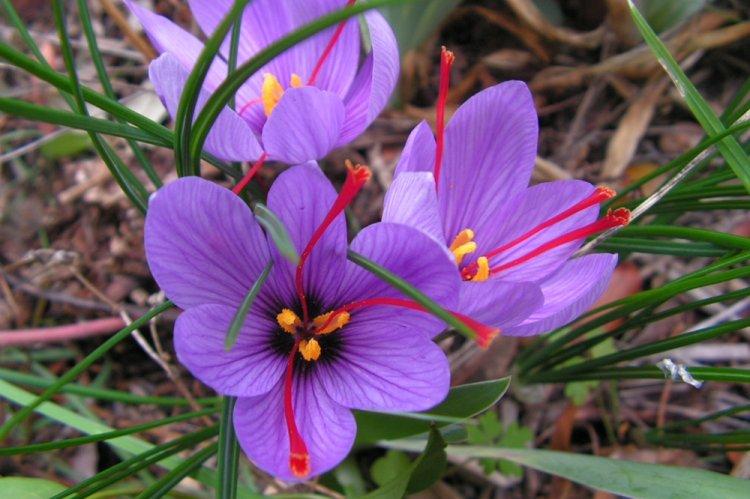
Golden crocus
Golden crocus resembles yellow with a rich shade of flowers, but belongs to a different category. These are Chrysanthus varieties, which are traditionally smaller and brighter than the Dutch hybrids. The golden crocus begins to bloom even before the snow completely disappears from the ground.
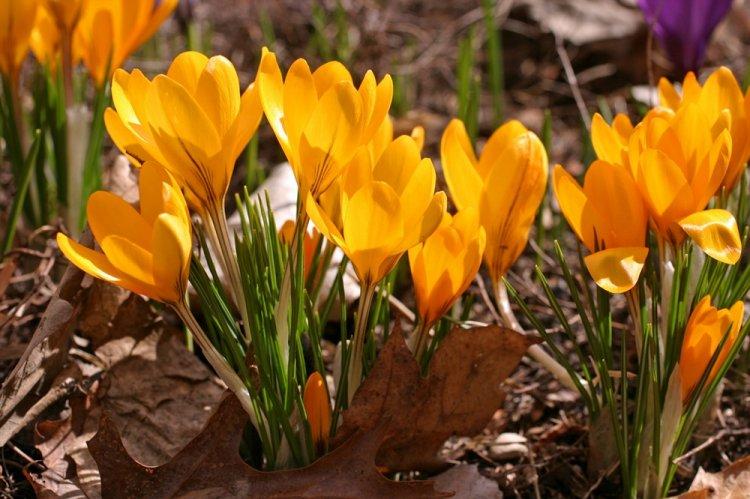
Two-flowered crocus
The peculiarity of this variety is a huge variety of shades, moreover, in natural conditions, without the experiments of breeders. There are even purple, blue and lilac flowers with purple or brown veins. In nature, the two-flowered crocus is common in the South-East of Europe.
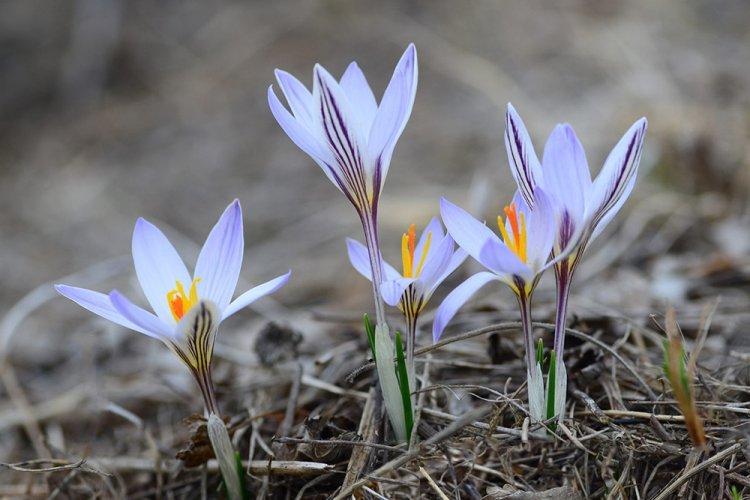
Crocus care
Crocus is one of the best flowers for our middle lane because it is perfectly adapted to its conditions. You do not have to make special efforts to make the flower feel good, grow, develop and even multiply.
Temperature
Crocuses are loyal to the sun, but not too fond of excessive heat, so the maximum temperature for healthy development is 18 degrees. But they easily tolerate cold snaps down to -7 and even -10 degrees. The recommended temperature regime is from 8 to 14 degrees, because it is not in vain that this is an autumn and spring plant.
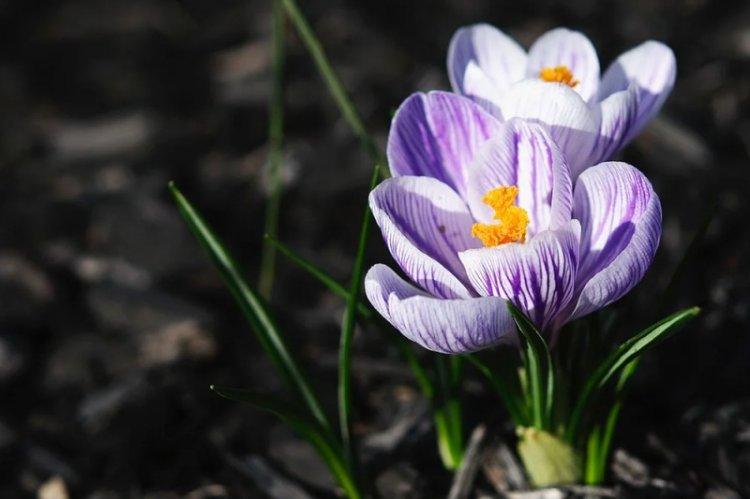
The soil
Crocuses adapt easily to almost any soil, so they take root in high-mountainous meadows and rocky gardens. They can be grown in home crates or pots if drainage is taken care of in a timely manner. The ideal soil should be dry, loose and nutrient-dense.
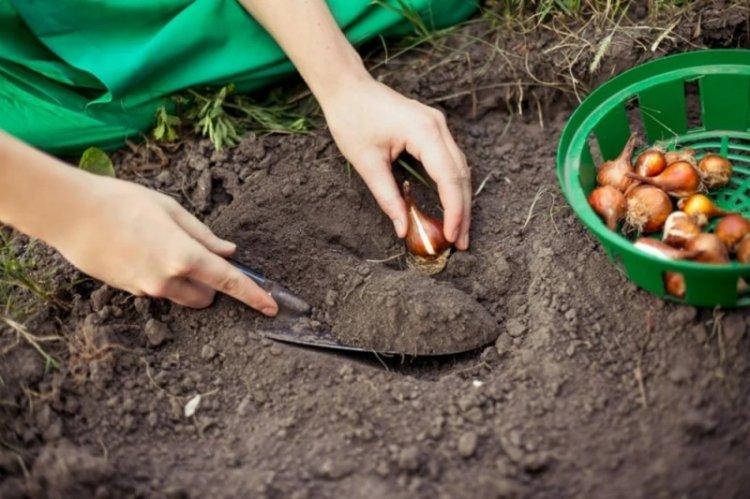
Lighting
All varieties of crocuses love the open sun and can easily endure even hot, clear days. But at the same time, they are quite comfortable in shaded areas. Therefore, they feel good at home on the windowsill on both the south and north sides.
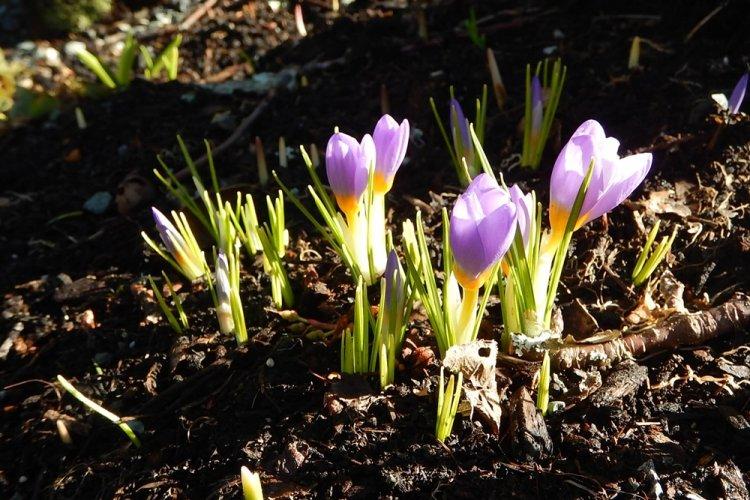
Watering
Crocuses are not very moisture-loving flowers, so they do not need to be watered separately. Only plants that are grown in boxes or flowerpots are irrigated. In open soil, they have enough natural moisture that they get from it. Watering the seedlings separately is necessary only if there was not enough snow in winter, and in the spring it did not rain.
When planting, be sure to familiarize yourself with drainage from river sand or fine gravel. Some varieties are generally impossible to grow in wet or clayey soil. And also they cannot be buried too tightly in heavy soil, otherwise the crocus will not rise.
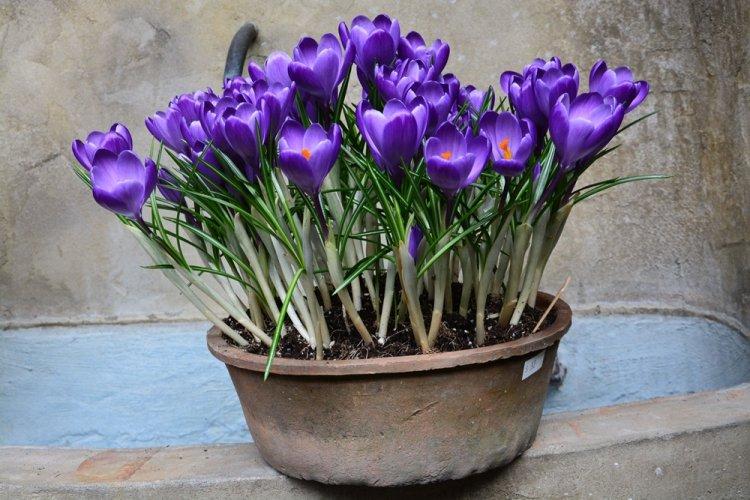
Fertilizers and feeding
Crocuses need feeding, especially if you breed them at home in a crate. Most of all, they love ordinary complex fertilizers for indoor flowers. But be sure to dilute them to a weak solution, otherwise the rhizome may die from concentrated fertilizer. Potassium and phosphorus are best, but too much nitrogen often leads to fungus.
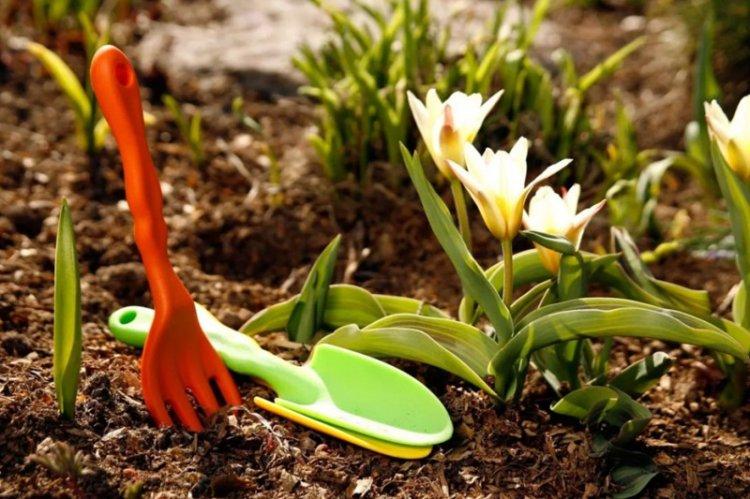
Transplant and reproduction
Under natural conditions, crocus reproduction is a well-oiled and self-sufficient cyclical process. At the end of the season, one tuber dies off completely, but in the next, new young "babies" emerge from it. They can be used for forced reproduction of crocuses.
To do this, remove the corms from the ground, dry them and leave them in a ventilated, dark and cool place until the next planting. If the rhizome is large enough, then the new crocus will bloom within a year after planting, if it is small and weak - in two.
Spring crocuses are planted in open soil in autumn and autumn crocuses in summer. In winter, they can be grown at home for distillation - it's very simple, as with all bulbs. We only recommend taking large-flowered varieties, for example, Dutch ones. After flowering, do not throw them away, but feed them with fertilizers, clean them of the substrate, wrap them with dry napkins and hide them in a dark dry place for transplanting them into the ground in the fall.
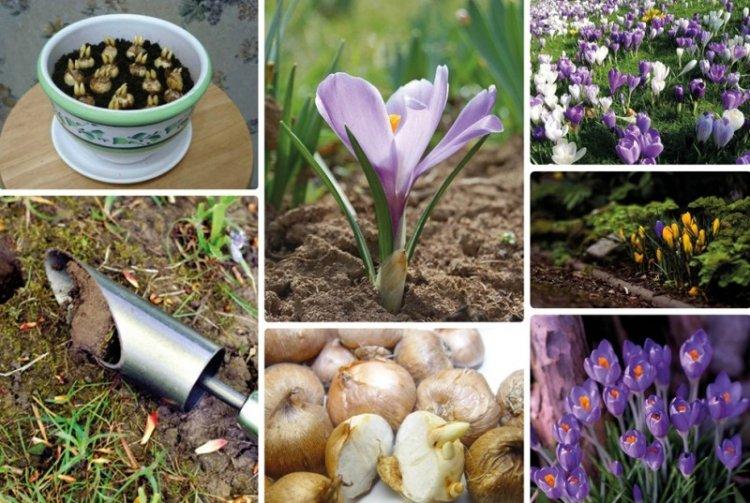
Pest and disease control
Crocus is a groundcover that slugs and wireworms cannot pass by. Unfortunately, they will have to be dealt with mechanically - by collecting and placing traps. The same goes for field mice, which are very fond of nutritious tubers and actively spread diseases.
The virus can be recognized by the compressed, deformed and painful flowers that cannot bloom normally. They look different from wilted and faded ones, so you definitely won't mix them up. Spring crocuses are more susceptible to various diseases and fungi than autumn crocuses, so the affected plants must be removed and destroyed as soon as possible.
Fungal diseases are a common problem with a squat flower, especially if the root system is not yet sufficiently developed. This is fusarium, and different types of rot, which will have to be mercilessly removed and destroyed.Do not forget about the preventive treatment of crocuses with fungicides!
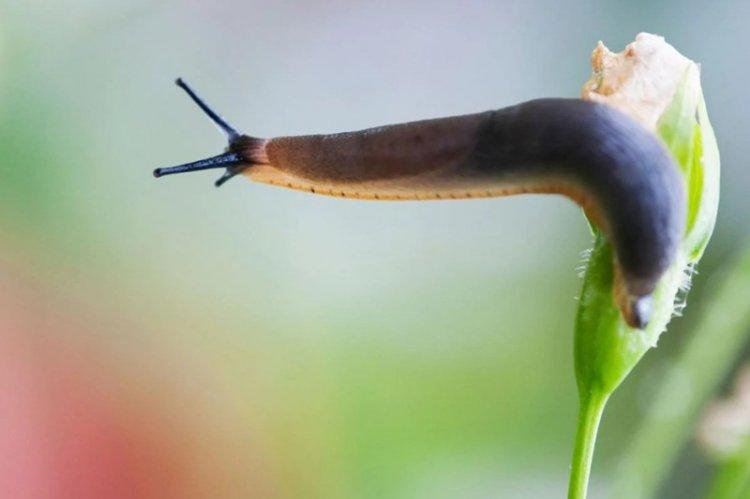
Crocuses - photo
Crocuses have a unique property: they cope with almost all their problems on their own. Whether it's drought, sun or shade, lack of minerals - the root system of a flower will survive and not so. But their advantages do not end there. Just look how beautiful they are!
